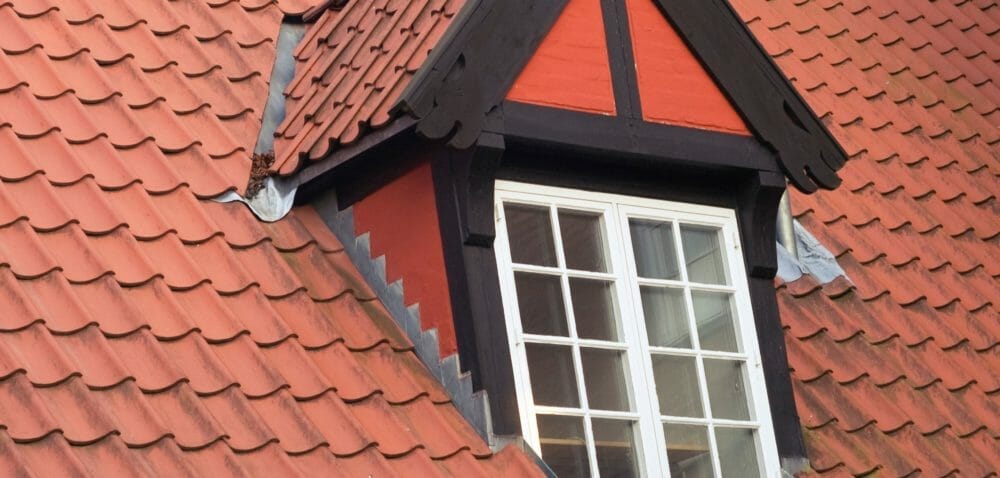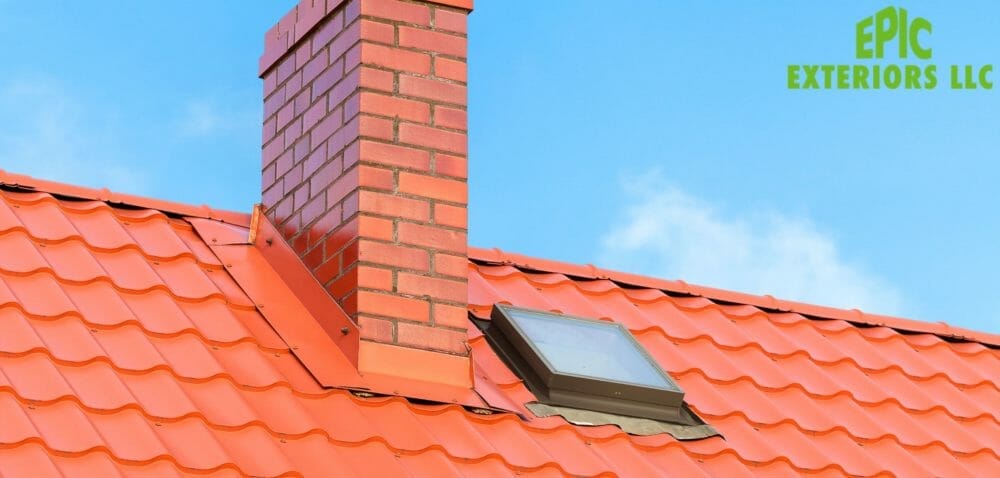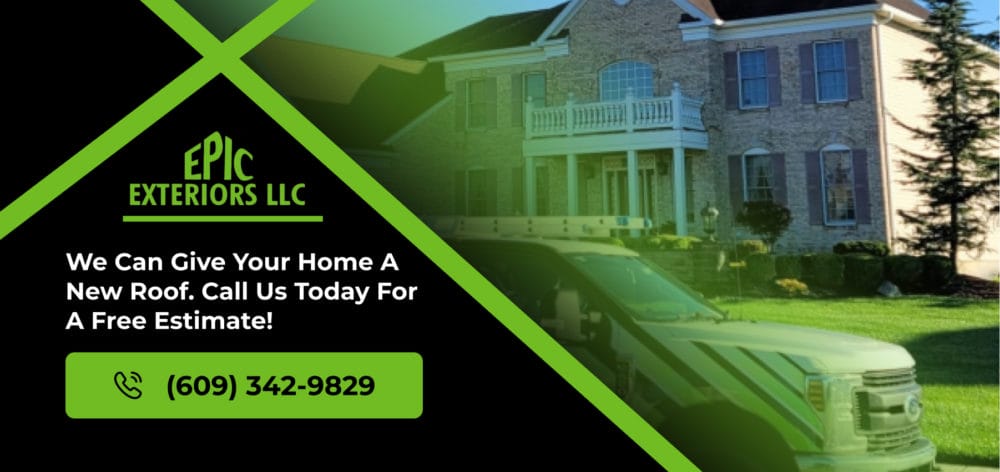Roof flashing may seem like a tiny part of a roof, but it holds significant value. Due to its small appearance, most homeowners don’t give it much thought until there’s a roof leak, but the truth is, this small detail is responsible for your roof’s proper functioning and durability.
At Epic Exteriors Roofing, we hold our company’s honest and friendly business ethics to high standards. As industry experts, we try our best to educate homeowners about their homes and the roofing industry. This article will cover everything about roof flashing, including tips to avoid typical mistakes, and solutions to common roof flashing issues.
Let’s begin with the basics.
What Is Roof Flashing?
Roof flashing is a piece of waterproof material that roofers install under the shingles at the roof’s edges, joints, twists, and turns. It creates an air and water-tight barrier around the leak-prone areas of the roof, such as dormers, vents, chimneys, skylights, and valleys. It also helps to keep the melting snow and high levels of heat out of your home. Flashing is made out of aluminum, galvanized steel, copper, plastic, or rubber. Metal is popular for shingle roofs, whereas rubber is suitable for sealing brick, concrete, or masonry.
Is It Necessary?
You must have heard the phrase ‘the devil is in the details. Well, this applies to roofing systems as well, and flashing is one such detail.
If you have missing, or damaged roof flashing it’ll be much easier for water, pests, rodents, and debris to enter your home through the small gaps between the roofing materials, insulation, and walls. Improper flashing is one of the biggest causes of roof leaks, pest infestation, and premature failure of the roofing system. The damage may not be noticeable for a long period of time, as fungus and insects take time to eat away the wood before it’s evident. Such damage without quick action leads to expensive repairs and replacements in the future.
Below are five overlooked facts about roof flashing that are actually quite important. Knowing these facts will help you save lots of time and money in the long run, and give you the peace of mind you deserve.
5 Essential Facts About Roof Flashing
Many contractors will tell you that roof flashing can make or break your roof, so we are here with some crucial tips for homeowners to ensure proper installation, and prevent common mistakes that occur with roof flashing.
#1 Important Roof Flashing Types
Different areas of the roof require a specific flashing method for complete protection. Three standard roof flashing techniques are continuous strip, step flashing, and double flashing.
Continuous Strip: In this technique, the roofers use a single metal or rubber strip to cover long areas of the roof. For example, roof valleys have a continuous W-shaped strip starting at the top of your roof, and running down to the gutters. Drip edges are another example of continuous roof flashing, but are installed below the underlayment.
Step Flashing: This type of flashing involves using a flashing piece that looks like an open card. The roofers bend the rectangular flashing from the center to 90 degrees, allowing it to cover the intersection of the wall and roof.

Double Flashing: Double flashing is done around the chimney to cover the brick and shingle joints. One flashing stip is installed over another to create a perfect seal.
#2 Roof Vent Installation Is A Roofing Task
When you get a new roof vent, it must be installed by a roofing contractor. Roof vent installation requires cutting the shingles and drilling holes in the roofing system. Roof accessories such as gutters fall under the leak-prone areas of a roof, so they need special flashing techniques to ensure there are zero gaps.
If you hire an HVAC contractor or someone who’s not a roofing professional, flashing won’t be their area of expertise. Inexperienced installers may make tiny mistakes you wouldn’t regularly notice. This will lead to leaks and pest infestation later on. For example, if you see bumpy, black sealing around the flashing, it could be a cover-up to fill the gaps left during the installation, which is an example of improper and unsightly flashing.
#3 You Can Make It Look Seamless
If you don’t want the roof flashing to be a visible element of your roof, you can ask your roofing contractor to cover it with shingles or fascia wherever possible. Valley flashing is the exception, but you can have it done to areas like dormers. This gives a smooth appearance to your home’s aesthetics and looks unique. Alternatively, you can also choose to paint aluminum flashing, maintaining a consistent look with the color of your roof.
#4 Don’t Skip Valley Flashing
While most homeowners know valleys are essential for proper drainage and waterproofing, we still see closed valleys on roofs that are only covered in shingles. Why? To the homeowner, the roof may look more seamless with all shingles, but this is not a strong enough water barrier. Protecting the open roof valleys with metal or rubber flashing is crucial. Copper and aluminum are also widely used for valley flashing, and rightfully so.
#5 Does Your Roof Leak In Heavy Rain?
If your roof is leaking in heavy rain it’s possible that the flashing is damaged. It is best to get this problem fixed instantly. If too much water gets into the attic it will damage the insulation, wood framing, and wiring systems of your home. Moisture will slowly corrupt the wood, walls, and ceiling without a permanent fix.
However, if a reliable roofing contractor isn’t available at the moment, you can make temporary arrangements before the team arrives. Go to your attic and mark the source of the leaks, and bring a bucket or bowl to catch the water. Don’t try to seal the leaks from the inside, because it will force the water upwards, causing it to spread in different directions and push up the underlayment and shingles.
We can guide you if you want to learn more about roof flashing or need someone to look at it.
Discuss Roof Flashing With Our Experts
Epic Exteriors Roofing, takes pride in having the most reliable and skilled roofing team. Our experts have over 30 years of industry experience which we utilize to help all homeowners. We’ve repaired dozens of roof flashing that were damaged or installed incorrectly. If you feel there’s an issue with your roof flashing, call us at (609) 342-9829. We are happy to help you with a free consultation and roof inspection.
 Home
Home
 About
About
 Roofing
Roofing
 Gutters
Gutters
 Service Areas
Service Areas
 Financing
Financing
 Instant Roof Quote
Instant Roof Quote
 Contact Us
Contact Us

